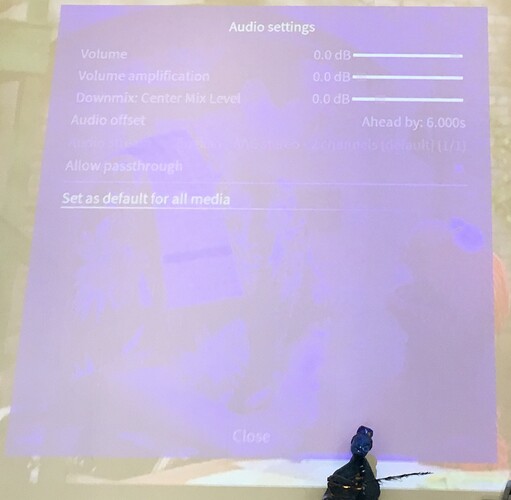I can’t see in that log where you actually attempt to play a stream. The audio.mpg thingy won’t be there unless you start to play something (or you set audio keep device alive to always). With no stream, you should still be able to navigate to http://192.168.0.94:8000/admin to check the server is working.
You need to use the IP address of the RPi. As far as darkice and icecast are concerned, the server is at localhost, but from another device use the RPi’s IP which is the same as you use for ssh.
That’s a bug which I thought we’d fixed already but will be fixed in the next upgrade. Use the @ device.
You did get the Loopback device showing up in Kodi so it should be OK. What I meant was do the modprobe then restart Kodi only (ie don’t reboot/shutdown). You can do that by
- clicking Power->Exit in the GUI or
sudo systemctl restart mediacenter in the commandline
I haven’t actually tested this on Pi, only Vero, and I get 48000 as the only available samplerate. You have a range
2020-08-16 20:10:13.086 T:1884287712 NOTICE: Device 3
2020-08-16 20:10:13.086 T:1884287712 NOTICE: m_deviceName : @:CARD=Loopback,DEV=0
2020-08-16 20:10:13.086 T:1884287712 NOTICE: m_displayName : Loopback (@:CARD=Loopback,DEV=0)
2020-08-16 20:10:13.086 T:1884287712 NOTICE: m_displayNameExtra: Loopback PCM
2020-08-16 20:10:13.087 T:1884287712 NOTICE: m_deviceType : AE_DEVTYPE_PCM
2020-08-16 20:10:13.087 T:1884287712 NOTICE: m_channels : FL, FR, BL, BR, FC, LFE, SL, SR, UNKNOWN1, UNKNOWN2, UNKNOWN3, UNKNOWN4, UNKNOWN5, UNKNOWN6, UNKNOWN7, UNKNOWN8
2020-08-16 20:10:13.087 T:1884287712 NOTICE: m_sampleRates : 8000,11025,16000,22050,32000,44100,48000,64000,88200,96000,176400,192000
2020-08-16 20:10:13.087 T:1884287712 NOTICE: m_dataFormats : AE_FMT_S32NE,AE_FMT_S16NE,AE_FMT_S16LE,AE_FMT_S16BE
2020-08-16 20:10:13.087 T:1884287712 NOTICE: m_streamTypes : No passthrough capabilities
When I get time, I’ll set this up on a Pi and see if you need a different setup.
Another thing - I see the guy in the howto you linked seems to be using two Sonoses in stereo and that’s the reason for his .asoundrc gymnastics.


